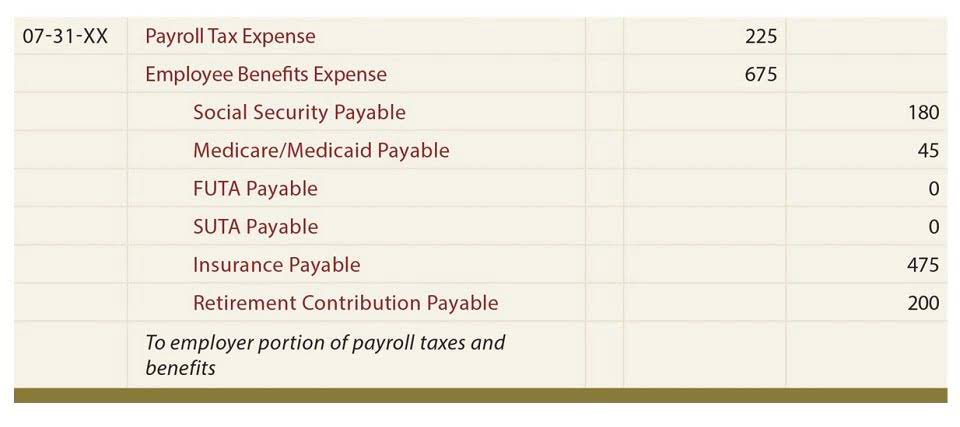
Your DPO doesn’t just tell you about your own business; it also tells you how you stack up against others in your field. If your DPO is much higher than average, it could mean you’re out-negotiating competitors or it could warn of potential cash issues. Either way, it’s a valuable insight into where you stand in the industry. Apply the formula to ascertain how effectively a company is settling its payables.
Normal balance FAQs
- Let’s discover what it truly is, why it’s significant in business finance, and gain an overview of the payable process.
- Balance sheet accounts are separated into current and noncurrent accounts.
- He has been a manager and an auditor with Deloitte, a big 4 accountancy firm, and holds a degree from Loughborough University.
- Many systems are limited in control of how special types of journal entries impact the various balance definitions tracked.
- The change in accounts payable subtracts the ending balance in the current year from the prior year’s ending balance.
Average Accounts Payable is determined by adding the beginning and ending AP for a period and dividing by two. Begin by noting down the opening balance of the Accounts Payable for the period (Beginning AP). Yarilet Perez is an experienced multimedia journalist and fact-checker with a Master of Science in Journalism. She has worked in multiple cities covering breaking news, politics, education, and more. Her expertise is in personal finance and investing, and real estate.

Basic calculation of Accounts Payable’s ending balance: AP Formula
On the other hand, if your business is considered as taking advantage of discounts on early payments if it is paying its suppliers very quickly. However, this flexibility to pay later must be weighed against the ongoing relationships the company has with its vendors. With its intuitive interface and powerful functionality, Try using Brixx to stay on top of your finances and manage your growth. An allowance granted to a customer who had purchased merchandise with a pricing error or other problem not involving the return of goods. If the customer purchased on credit, a sales allowance will involve a debit to Sales Allowances and a credit to Accounts Receivable.
- On the flip side, a lower DPO suggests you’re paying bills swiftly, possibly to snag discounts or meet supplier terms.
- Most of the balance on a five-year loan, for example, is categorized as a long-term (noncurrent) liability.
- Accountants work hard to deliver accurate financial data and insightful services that keep clients in compliance.
- For accounts payable, the usual trend for the normal balance is usually credit.
- Receivables represent funds owed to the firm for services rendered and are booked as an asset.
What is the Result of an Increase in Accounts Payable During a Period?

The account payable is recorded when an invoice is approved for payment. It's recorded in the General Ledger (or AP sub-ledger) as an outstanding payment or liability until the amount is paid. The sum of all outstanding payments is recorded as the balance of accounts payable on the company's balance sheet. The increase or decrease in total AP from the previous period will be recorded in the cash flow statement.
What is debit balance in accounts payable?
Knowing the normal balance of accounts for each account type will help you understand how debits and credits affect each type of account. It is useful to note that A/P will only appear under the accrual basis of accounting. For those that follow the cash basis, there won’t be any A/P or A/R on the balance sheet at all. This is due to under the cash basis of accounting, transactions only be recorded when there is cash invovled, either cash in or cash out. On the other hand, when we make payment for the purchased goods or services, liabilities will decrease. So, we will debit accounts payable as debit will decrease liabilities.
- All outstanding payments due to vendors are recorded in accounts payable.
- In short, a higher days payable outstanding (DPO) is often indicative of a company’s operations becoming more efficient, since its free cash flow (FCF) improves.
- Learn how to automate your accounting for accurate records, financial statements, and insights.
- Accounts payable most commonly operates as a credit balance because it is money owed to suppliers.
- These are the main types of products for which companies have accounts payables.

On the other hand, accounts payable refers to the amount you owe to your suppliers for goods or services received from them. Thus, the purchases account gets debited, and the accounts payable account gets credited. Furthermore, it is recorded as current liabilities on your company’s balance sheet.
- Also, you need to cross-check the goods received from your suppliers with those mentioned in the invoice.
- When you make a debit entry to a liability or equity account, it decreases the account balance.
- Revenue is the income that a company earns from its business activities, typically from the sale of goods and services to customers.
- As a matter of fact, the two are conceptually contradictory to each other.
Hence, the necessity to calculate the days payable outstanding (DPO) of a company on a trailing-basis. In practice, the days payable outstanding (DPO)—or “AP Days”—is the most common operating driver to project the accounts payable of a company in a pro forma financial model. On the balance sheet, the accounts accounts payable natural balance payable (A/P) and accounts receivable (A/R) line item are conceptually similar, but the distinction lies in the perspective (or “point of view”). Conceptually, accounts payable—often abbreviated as “payables” for short—is defined as the invoiced bills to a company that have still not been paid off.
Review your systems for managing accounts payable and use technology to automate the process. Use QuickBooks accounting software to scan invoices, post payables into your accounting system, and pay invoices electronically. With automated accounts payable, you gain real-time insights into your financial status. You can easily track pending invoices, payment statuses, and overall cash flow, allowing you to make informed decisions quickly. The accounts payable (AP) department is responsible for implementing the entire accounts payable process. The department is also a key driver in supporting the organization as a whole when it comes to vendor payments, approvals, and reconciliations.

